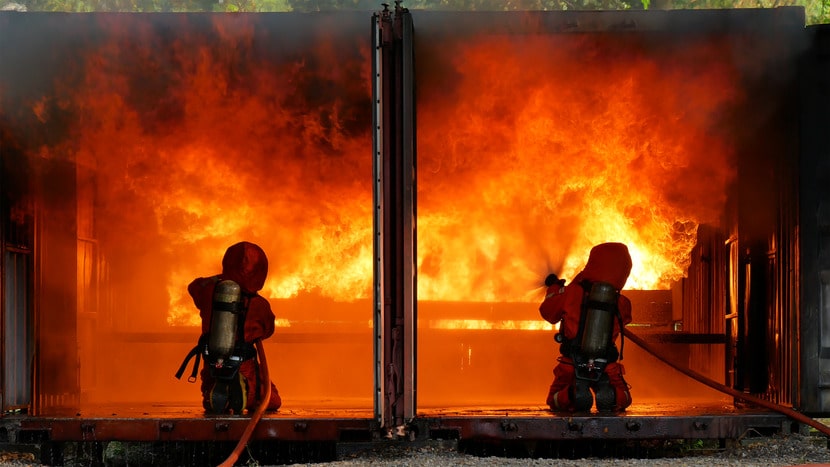
- July 5, 2023
- |security guard company
- | 0
- 658
Swift and Effective Fire Watch Guards –
As a reputable fire watch guard company, XPressGuards recognizes the critical role of emergency response protocols in protecting lives and minimizing the devastating impact of fire incidents. Fire watch guards are on the front lines of fire safety, ready to respond swiftly and efficiently to emergencies. In this article, we will explore the essential components of emergency response protocols for fire watch guards, focusing on their responsibilities, coordination efforts, and the steps they take to ensure a safe and effective intervention.
1. Immediate Assessment and Communication
The first step in any emergency response protocol is the immediate assessment of the situation. Fire watch guards are trained to promptly assess the severity of the fire incident, evaluate potential risks, and identify the need for additional resources or specialized assistance. Simultaneously, they initiate clear and concise communication, alerting occupants, colleagues, and the appropriate authorities about the fire emergency.
2. Activating Fire Alarm Systems
Fire watch guards are responsible for activating fire alarm systems when necessary. They pull the manual call points or operate control panels to activate the alarm, ensuring that the audible and visual alerts are effectively communicated throughout the premises. Activating the fire alarm systems plays a vital role in alerting occupants to evacuate the building promptly and notifying the local fire department.
3. Coordination with Local Fire Departments
Fire watch guards work closely with local fire departments to ensure a coordinated and effective response to fire incidents. They provide accurate and detailed information to the fire department, including the location of the fire, potential hazards, and any relevant building or occupant details. Fire watch guards act as a liaison between the premises and the fire department, assisting with gathering information, providing updates, and facilitating the smooth flow of communication.
4. Ensuring Safe Evacuation
One of the primary responsibilities of fire watch guards is to ensure the safe and orderly evacuation of occupants during a fire emergency. They guide and direct individuals to designated evacuation routes, using their knowledge of the premises and familiarity with exit locations. Fire watch guards assist vulnerable individuals, such as the elderly or individuals with disabilities, ensuring their safe passage to safety.
5. Controlling Crowds and Maintaining Calm
During a fire emergency, panic and chaos can escalate the risks and hinder evacuation efforts. Fire watch guards are trained to maintain calmness and control crowds, employing effective crowd management techniques. They provide clear and authoritative instructions to occupants, keeping them informed and reassured throughout the evacuation process. By maintaining order and preventing panic, fire watch guards facilitate a safe and efficient evacuation.
6. Utilizing Fire Suppression Equipment
Fire watch guards are trained in the proper use of fire suppression equipment, including fire extinguishers and hose reels. If the fire incident is small and manageable, fire watch guards may attempt to extinguish the fire using the appropriate extinguishing agent. They follow established protocols, considering factors such as fire type, size, and potential risks. Fire watch guards prioritize safety and understand when it is necessary to retreat and await the arrival of professional firefighters.
7. Assisting Firefighters and Emergency Responders
Fire watch guards provide vital assistance to professional firefighters and other emergency responders upon their arrival. They communicate crucial information about the incident, including any hazards or conditions that may impact firefighting operations. Fire watch guards ensure that access points are clear, and relevant keys or access cards are provided to emergency responders. They collaborate with the incident commander and support firefighting efforts as directed.
8. Incident Documentation and Reporting
After the fire incident has been successfully resolved, fire watch guards are responsible for documenting the details of the emergency response. They complete incident reports, detailing the actions taken, the timeline of events, and any relevant observations or recommendations. Accurate and comprehensive documentation serves as a valuable resource for future analysis, improvement of emergency protocols, and compliance with legal and regulatory requirements.
9. Ongoing Training and Preparedness
Fire watch guards undergo continuous training and preparedness exercises to enhance their emergency response skills. They participate in drills, simulations, and scenario-based training sessions to practice their response to different fire emergencies. By remaining updated on best practices, fire watch guards are better equipped to handle diverse situations and adapt their response strategies accordingly.
Emergency response protocols are critical to the role of fire watch guards in safeguarding lives and minimizing the impact of fire incidents. From immediate assessment and communication to coordinating with local fire departments, ensuring safe evacuation, and providing assistance to emergency responders, fire watch guards play a pivotal role in effective emergency response.
Through ongoing training, preparedness, and adherence to established protocols, fire watch guards from XPressGuards are dedicated to providing swift and efficient intervention during fire emergencies. Our vigilance, coordination, and commitment to safety contribute to creating a fire-safe environment for all. Contact us to learn more.


